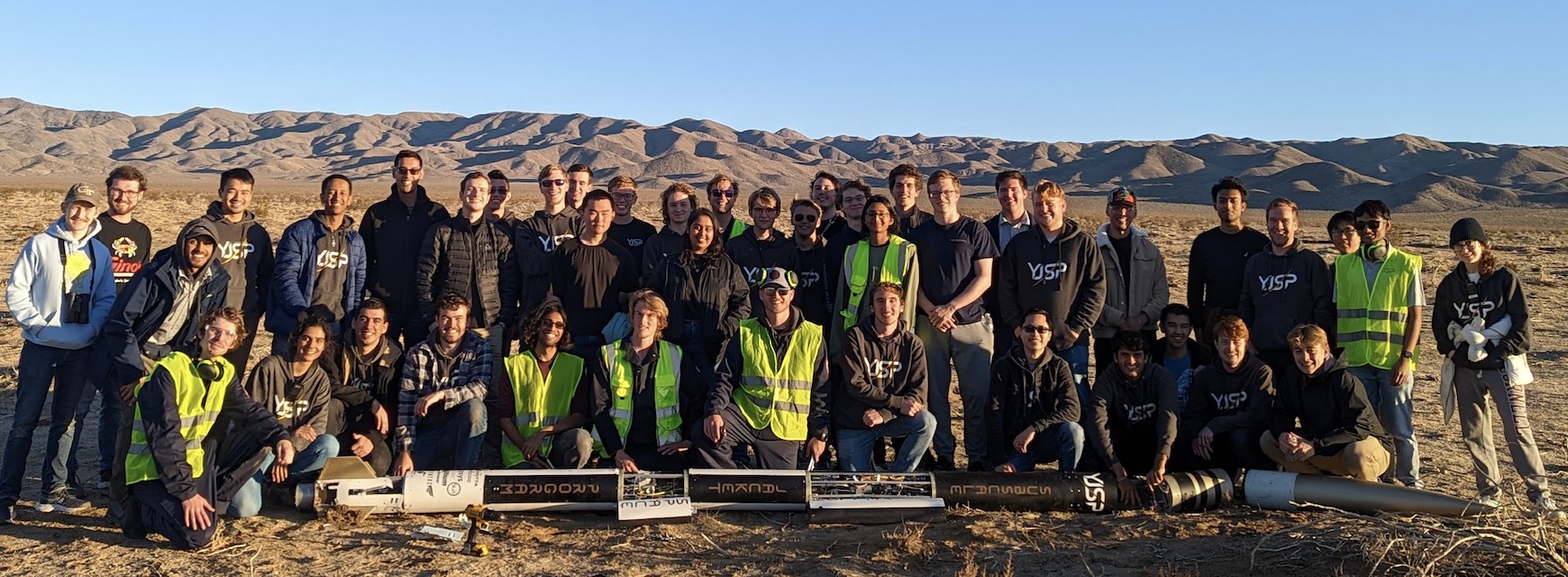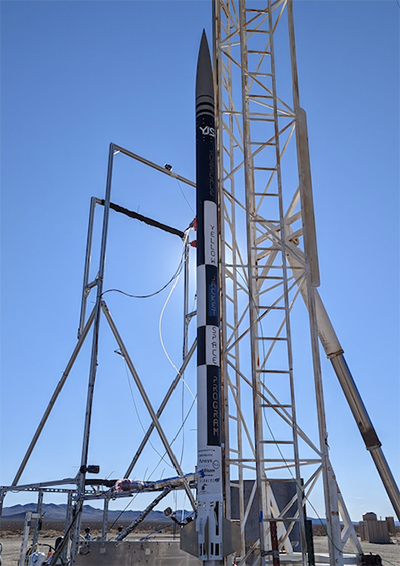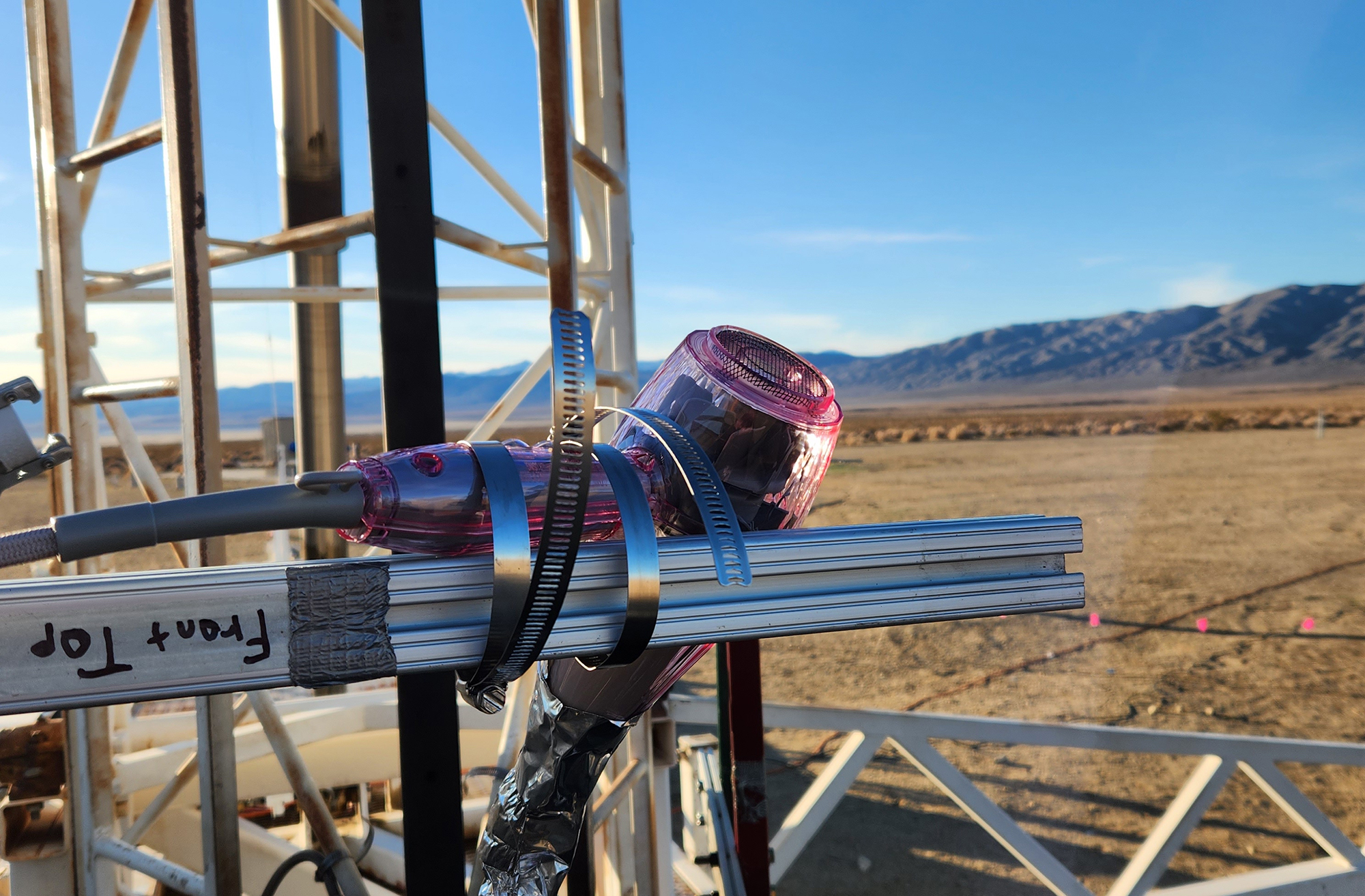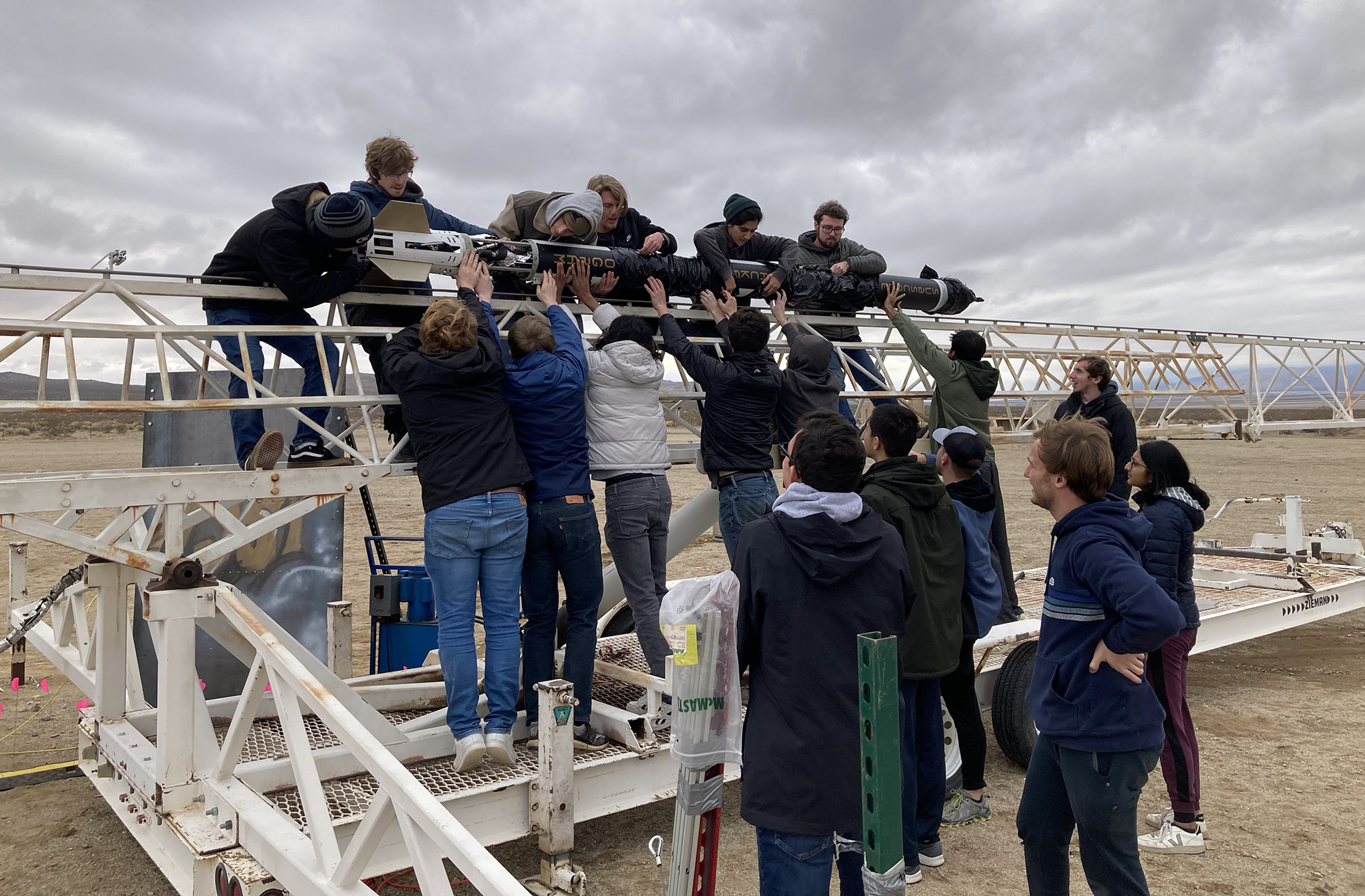
After Milestone Launch, Yellow Jacket Space Program Is Shooting for the Stars
T-Minus 15 seconds
From a mission control bunker in the Mojave Desert on Jan. 6, the Yellow Jacket Space Program (YJSP) crew prepared to witness the culmination of five years of work as the countdown began to launch of their subscale liquid-fueled rocket.
At this moment, all of the test fires, the diagnostic checks, and preparations for launch provided little comfort to the crew, especially mission control operator Anthony Otlowski, knowing what was at stake and how quickly it could all fall apart.
"My hands leave the keyboard, and I'm thinking, 'There are a million different ways this could go wrong.' Our valves couldn't open, we could lose communication and the vehicle could half-fire, or the engine could hard-start and we blow everything up," the aerospace engineering major said, recalling initiating the launch sequence. "Just the amount of emotions going through my head as I clicked the button and gave the countdown, it was hard to keep a straight face and give everybody a clear picture of what was happening."
Even getting to this point was an accomplishment for a club that began in 2015 as what co-chief engineer Rithvik Nagarajan described as "a raggedy bunch of students who just wanted to test an engine." Now 250 members strong, the club is trying to become the first collegiate team to reach space.


T-Minus 10 seconds
As the 18-foot rocket's internal processes take over, the crew watched closely for any irregularities, which had been all too prevalent throughout their preparation at the test site.
Weather delays in the desert put the crew on a condensed schedule, and issues with the rocket's main valves freezing jeopardized the launch. Putting their engineering hats on, the propulsion team used a hair dryer and aluminum foil to properly heat the valve during testing and on launch day.
"As things started to go wrong, we had to keep that camaraderie, figure out what was going on, and maintain that passion and optimism for the mission," avionics lead Rene Garg said.
That optimism was rooted in the numerous successful tests performed at the North Avenue Research Area on the Georgia Tech campus, where the rocket was constructed inside a 20-foot shipping container.


T-Minus 5 seconds
Mission control sees ignition right on cue, but thrust was low with time ticking down. A decision to abort the launch would have to occur right now, but doing so could destroy the engine in the process.
"We're all watching it thinking it's not going to go up. And then, the thrust started ramping up really fast," Nagarajan said.
Liftoff
In the blink of an eye, the largest rocket ever created by Georgia Tech students launched off the rail, and a long-awaited sigh of relief quickly gave way to a raucous celebration inside mission control.
"Nothing prepares you for the experience of seeing a rocket launch in real life,” YJSP President Adele Payman said. “Even though I had seen this rocket being tested dozens of times, it was still a huge surprise and really thrilling to see the launch. It was something I will remember for the rest of my life."
For the next two minutes, the team watched the liquid oxygen-propelled rocket soar into the desert sky before it landed nearly a mile and a half away. The rocket soared past the team's expectations, reaching an apogee of 1.5 km and 900 pounds of thrust, allowing the team to sit back and toast to a job well done.
"We showed up to a restaurant with a reservation for 47, chowed down, and everybody passed out after that. It had been a long week of 5:30 a.m. departures and getting back late at night, so we were all very tired and so happy to see it work. We rested well that night," propulsions lead Callum MacDonald said.
Pushing the Limits
The rest didn't last long, as the YJSP crew returned to Atlanta and got back to work.
"This has been a huge achievement and it really was a make-or-break moment for this team. Having accomplished that, we now know that we can do so much more, and we're going to keep pushing," Ethan Heyns, co-chief engineer, said.
With a successful launch of their proof-of-concept vehicle under their belt, the crew feels they have a head start on their full-scale mission — a planned 40-foot rocket capable of launching 100 km above the Earth.
While current members will graduate and leadership roles will change hands, the crew that launched the subscale rocket believes they have set the foundation for the next generation of YJSP to reach new heights.
"The launch definitely gave us a lot of confidence in the models we were using, and we think that we can go for some spicy margins on our next rocket to tweak up the performance,” outgoing structures lead James Cipolletti said. “We’re very excited about the prospect of doing that."
Along with breaking records, the club gives Georgia Tech students the opportunity to work directly with the same systems used by industry leaders NASA and SpaceX, and while the days leading up to launch were demanding, it's an experience that the team wouldn't trade for anything.
“There have definitely been times when I've been up until 3 a.m. with other people on YJSP and maybe I have a test the next day or a bunch of assignments due, but it really is worth it when you're working with people who are so passionate about a mission,” Garg, who is also a SpaceX intern, said. “I would gladly put 10 to 20 hours a week into this club because it's given me opportunities in my career and helped me learn a lot more than just being in class."
As YJSP turns its attention to its next mission, new members are always welcome, and as operations lead Will Miller can attest, the club has a role for everyone, regardless of their major. While many members are aerospace engineers, Miller's team, which handles logistics, budgeting, social media, and other day-to-day business processes, is comprised of engineering, business, and computer science students.
"It's interesting to watch all the different disciplines come together to make a large organization like this function,” he said. “It's not just the engineering and the machining going on. There's so much going on in the background, and all of that logistical overhead has to happen in order for the engineering to happen."
The launch in the Mojave Desert was a milestone achievement for YJSP and the realization of a concept. Now, the group is shooting for the stars.

Credits
Story: Steven Gagliano
Video: Candler Hobbs
Photos: Yellow Jacket Space Program